@ 05 May 2011
Since we have developed the technology, we’ve been sending messages into space ― from scientists, rock stars, students, politicians ― in the hopes that someone or something will hear them and respond. That practice of broadcasting is known as Messaging Extraterrestrial Intelligence (METI). Here are some of the messages that we have beamed into the cosmos in an attempt to get E.T.'s attention.
The Arecibo message
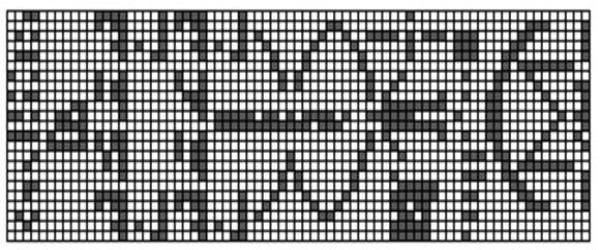
Credit: Cornell University
Beamed out 37 years ago, the Arecibo message is still the most powerful broadcast ever deliberately beamed into space. It was sent from Cornell University’s Arecibo radio telescope in Puerto Rico.
The transmission was aimed at the globular star cluster M13. The cluster is roughly 21,000 light-years from us, near the edge of the Milky Way galaxy, and contains approximately a third of a million stars.
Researchers worked together to create a message that contained basic information about Earth and the life it contained. It including a graphic of the Arecibo telescope, our solar system, human DNA, a stick figure of a human, and some of the biochemicals of earthly life.
The message took only three minutes to transmit, and so far, we haven’t heard back.
Pioneer 10 and 11
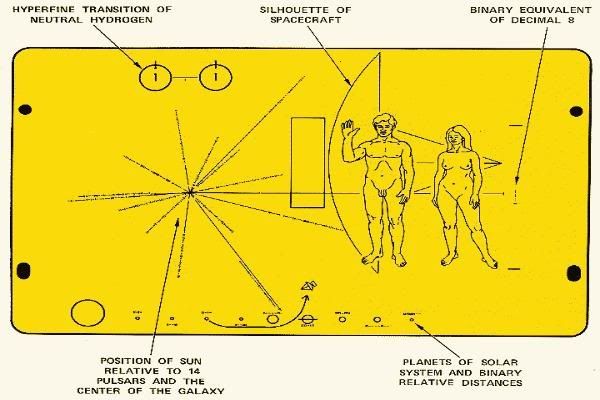
Credit: NASA
Pioneer 10 was the first spacecraft to reach Jupiter, Saturn, and beyond the solar system toward other stars. Soon afterward, Pioneer 11 followed its exact flight pattern, and presumably they’re still going, though we have lost contact.
Knowing that these two crafts would make it so far into space and would be traveling for years to come, NASA attached plaques to both Pioneer 10 and 11 with information about Earth.
The 6- by 9-inch gold anodized plaques were bolted to the spacecrafts’ frames; they depict a man – whose right hand is raised as a sign of good will – and woman. In addition, they show the layout of our solar system, as well as our sun’s position relative to a number of pulsars are shown, so that our location can be triangulated from fixed points in space. The hope is that the beings who find it can figure out whence the probe came.
Pioneer 10 was the first spacecraft to reach Jupiter, Saturn, and beyond the solar system toward other stars. Soon afterward, Pioneer 11 followed its exact flight pattern, and presumably they’re still going, though we have lost contact.
Knowing that these two crafts would make it so far into space and would be traveling for years to come, NASA attached plaques to both Pioneer 10 and 11 with information about Earth.
The 6- by 9-inch gold anodized plaques were bolted to the spacecrafts’ frames; they depict a man – whose right hand is raised as a sign of good will – and woman. In addition, they show the layout of our solar system, as well as our sun’s position relative to a number of pulsars are shown, so that our location can be triangulated from fixed points in space. The hope is that the beings who find it can figure out whence the probe came.
Voyagers’ golden record
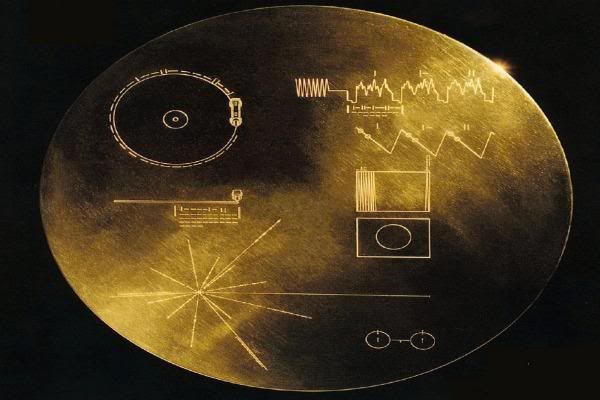
Credit: NASA
Four years after Pioneer 11 was launched, Voyager 1 and Voyager 2 were sent out to explore Jupiter and Saturn, and NASA decided to take their message to the next level.
Voyager 1 and 2 contain a “time capsule” that, according to NASA, was “intended to communicate a story of our world to extraterrestrials.” The Voyager message is carried on a 12-inch gold-plated copper phonograph disk containing sounds and images selected to portray the diversity of life and culture on Earth.
After the section that contains the sounds of Earth, the record’s creators included a 90-minute section of music that includes both Eastern and Western classics as well as a selection of ethnic music from all over the planet.
The Voyager spacecrafts left our solar system in 1990, and it will be 40,000 years before they make it close to any other planetary system, so we still have a while to wait before we get a return message.
“A Message from Earth”
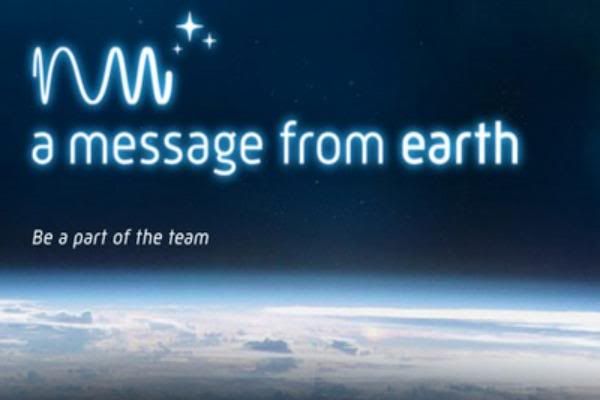
Credit: Bebo
While Facebook seems to be the social network that has achieved everything, the honor of being the first one to try to network with extraterrestrial intelligence goes to Bebo, which sent out “A Message from Earth” in 2008.
Some 501 photos, drawings and text messages from the site’s 12 million users were transmitted by the National Space Agency of Ukraine's RT-70 radar telescope, which is normally used to track asteroids. The messages were sent to the planet Gliese 581C, which is 20 light-years from Earth, in the hope they would reach intelligent alien life.
Bebo users submitted their messages as part of a competition, and 501 were translated into a binary format, so they could be sent the 120 trillion miles to the Gliese 581C. According to the competition, the messages could cover any range of topics. They should be reaching their destination in 2028.
Cosmic Calls 1 and 2

Credit: S. Korotky
Cosmic Call 1 and Cosmic Call 2, pictograms broadcast from Moscow toward various star systems, featured the “Interstellar Rosetta Stone.”
The “rosetta stone,”developed by Yvan Dutil and Stephane Dumans, was based on mathematical and scientific concepts believed to be universal. The hope was that any alien life form that intercepted the calls would be able to use it to decipher the messages.
The calls were sent out by Alexander Zaitsev, of the Russian Academy of Science in Moscow to sunlike stars within 70 light-years. The first Cosmic Call was beamed toward four separate star systems, 16 Cyg A, Gliese 777, HD 178428 and 15 Sge. The second, reached out to five stars, including 55 Cancri, which is home to a complex planetary system.
The second message also included 50 personal messages from individuals including David Bowie and elementary students from the Ukraine.
The Teen-Age Message
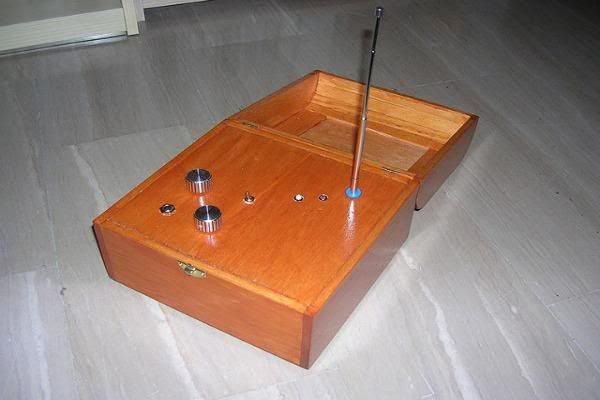
Credit: Farnea via Flickr
In addition to the Cosmic Calls, Zaitsev had his hand in the Teen-Age Message, which was a transmission put together by students from all across Russia.
The TAM transmission was sent out in six sessions in August and September 2001 from the Evpatoria Deep Space Center. It was transmitted to six nearby sunlike stars, some of them with at least one planet.
Like the Arecibo message, TAM had digital information, but Zaitsev and the students decide to include that information in analog format as well, to “compensate for the uncertainty of which is more easily understood by extraterrestrials.”
TAM included personal greetings, messages about Earth, and music that was made with a theremin – the electronic instrument used to make the eerie sounds from 1950s science fiction B-movies.
Doritos commercial

Credit: Doritos
In a 2008 publicity campaign, radars in the Arctic Circle broadcast six hours of a repeating Doritos commercial. Surprisingly, it has not made us targets of an alien attack.
The ad was directed toward a solar system in the Ursa Major constellation, which is only 42 light-years away from Earth. This system has a “habitable zone,” which scientists believe could be host to an Earth-like planet and extraterrestrial life.
The EISCAT European space station on the Norwegian island of Svalbard sent the message using its array of radars. It was sent as an MPEG file coded into 1s and 0s. Researchers agreed that the message would look just like a random series, but they hoped that through its repetition, extraterrestrials would identify the message as intelligent.
RuBisCo message

Credit: U.S. Department of Energy
On the thirty-fifth anniversary of the original Arecibo message, MIT biology fellow and artist Joe Davis sent the genetic code for the plant enzyme RuBisCo into space.
RuBisCo, which is essential for photosynthesis, is the most abundant protein on Earth, which is why Davis selected it to represent life on Earth.
According to Peter Weigele of New England Biolabs, “The choice of this molecule for broadcast communicates the central importance of our sun in sustaining life as well as an implicit understanding of the role of [carbon dioxide] in our biogeochemical systems. This is a message that is both timely and timeless – for the universe and here on Earth!”
This was also the first transmission that required the aid of an iPhone. When Davis arrived at Arecibo, the encoder normally used to modulate the beam was out of commission, so he used his iPhone as an improvised source to get the new coded message modulated into the 1,000-foot-wide dish’s 2-million-watt radio beam.
“Hello from Australia”

Credit: HelloFromEearth/Cosmos Magazine
In 2009, Australia’s Cosmos magazine took a cue from Bebo and reached out to its readers to create a goodwill message to transmit through space.
The magazine’s website collected text-message-length sentiments from people all over the world. The first came from Kim Carr, Australia’s minister for innovation, industry, science and research. It said: “Hello from Australia on the planet we call Earth. These messages express our people’s dreams for the future. We want to share those dreams with you.”
It was sent from the Canberra Deep Space Communication Complex to the planet Gliese 581d ― a planet in the same system as Gliese 581c, which was the recipient of “A Message from Earth.” Australia’s message should be arriving just a year later, in 2010.(original text puts 2029?)
Kepler DVD
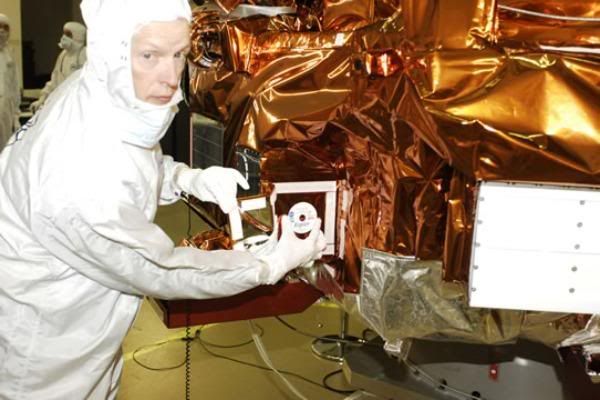
Credit: NASA
In keeping with its earlier messaging practices, NASA included a DVD with the Kepler spacecraft two years ago.
The Kepler was specifically designed to search our region of the Milky Way galaxy for other habitable Earth-size and smaller planets. If by chance it did find life, it had a message.
Unlike the messages from Pioneers 1 and 2 and the Voyager golden record, these messages came from the public. For six-month period, tens of thousands of people submitted messages explaining why the Kepler mission was important. These were then recorded on the DVD, which was attached to the spacecraft.
The spacecraft is still going, so there is still a chance that the message may be discovered.








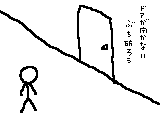










No comments:
Post a Comment